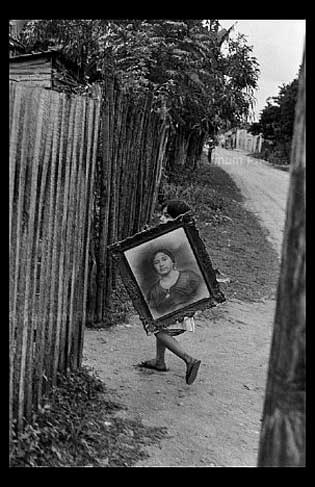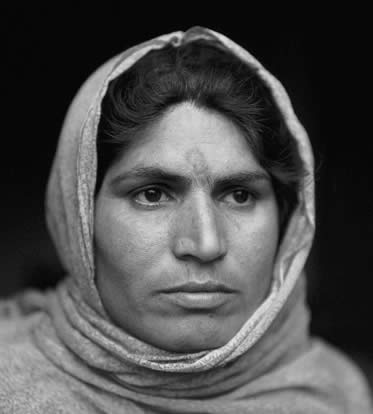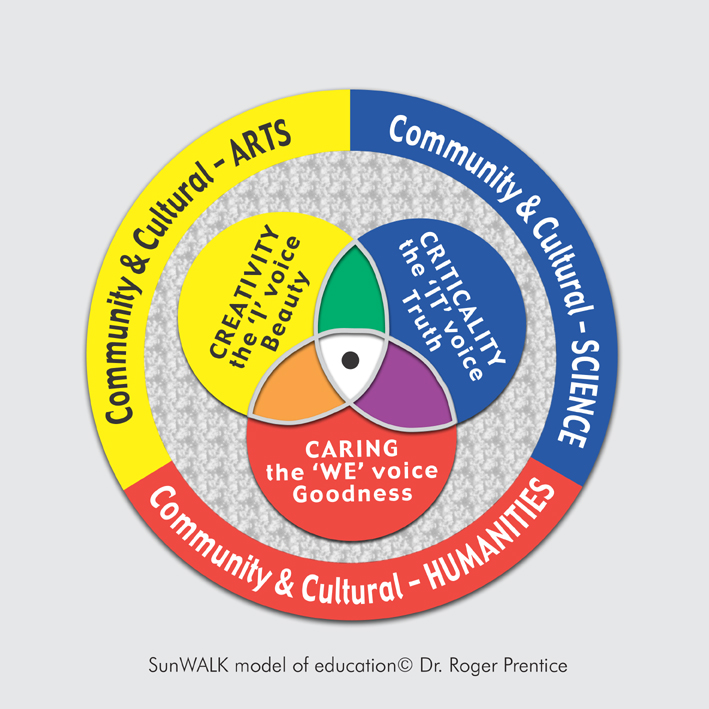 Source
Source
In the unpublished doctoral thesis, from which this piece and Jane’s Short Story, is largely taken, the range of concerns include ‘the perpetuation in the present of early experience’. I’m interested to discover that one definition of ‘nowness’ is presentness: the quality of being the present; “a study of the pastness of the present and…of the presentness of the past”.
I wrote Jane’s Short Story to see what a Year 7 class (11 – 12 year olds in the UK) could ‘handle’, but it has become a major piece for teaching me, as well as for teaching others.
Jane’s short story (line numbers are simply to help in discussion)
1 “Come to mummy Jane. Come on, yes, you can do it.” Ste…steppp…stagger step..step got there BIGKISSmmmms’nice. Her mother’s nose stroked back and forth across her neck, as giggles of delight and laughter bubbled from Jane.
“Jane pay attention otherwise you’ll be asking me what the work is in five minutes time.”
5 (’Oh no I won’t Mr Moaner, I know perfectly well what you’re asking – so stop picking on me!’)
“Images Jane, images.”
Tulips. Gigantic red tulips, opened a bit beyond their best, and bigger than any red thing and redder than any red thing and she crawled to grasp, to know the greenness of the green cool green stems and embrace them and lose herself in the redness that was ……..
10 “I want you all to pay attention to the structure of your story……..”
How could she tell her mother that she never felt safe after he left. Only in his hugs with the smell of him did she ever, could she ever, feel safe. She chewed over this and poured herself another bowl of corn-flakes, sensing school time getting nearer and nearer. Her mother had left without giving the bus fare.
Yet again Jane’s leg itched from the nylon thread in the seam of her skirt.
15 She grasped the chair to ease her leg away from the itch, only to put her fingers under her chair and into some freshly placed chewing-gum. “Ugh! Boys are so disgusting!”
“Thank you Jane. I’m not sure what that has to do with careful control of your narrative but I suppose we should be grateful that at least you’ve re-visited our world, even though the visit will no doubt be brief. The trouble with you Jane is that you don’t use the possibilities and talent you have.”
20 Endless possibilities. The muddy brown wet sand, miles and miles of it. She sensed freedoms beyond the edge of her imagination, she would be all creation itself.
“Put your hat on Jane and come here – you’re not going in the sun until I put some cream on you.” Jane submitted to the sun-cream and enjoyed it but also remembered the tug of the harness around her shoulders – tug tug, with her running but not going anywhere.
25 “……and do try to put some images into your writing – do make it come alive.”
The finch, with feathers going in directions they shouldn’t, struggled on its side. The broken leg would not need mending because the shock was already killing the tiny creature. Jane hated the cat with an acid and granite hatred.
“You have ten minutes to finish your story.”
30 Jane sat back on her rump and examined her mother’s radiant face.
She spat out the tulip petals as her sadness entered her.
She was as rigid as the door he had slammed behind him.
She willed the incoming tide to consume her castle and leave only empty sands.
The finch stopped its fluttering and took on the stillness of death.
35 Jane wrote some lines.
Jane felt the tug tug of the harness and struggled to go somewhere.
—–0—–
Jane is, substantially, but not wholly, me. It was an attempt to make the feminine side of my soul ‘walk and talk’
In writing the story I reached back down to early memories with which to ‘clothe’ some of the levels in the streams of consciousness.
In continuing to work with children, or adults, I still sometimes use Jane’s Short Story – as a way to encourage others to create their own stories, made from their own real, and imagined, experience. I discovered how powerful it is if PFC (Philosophy for Children), and creative task-setting, are combined/interwoven – so much so that I believe that the two, when harnessed, together create something akin to ‘exponential development’ i.e the most powerful form of transformative learning. It is still a joy, and a learning experience, when children make their own creations walk and talk, sing and shout, just as Jane became ‘real’ to me, some 9 or 10 years earlier. From time to time I revisit the story and change a few words. Once I also gave it to the same class on succeeding years and asked them to see what they could see compared to their ‘reading’ of the previous year – and to say what differences they felt between the two readings. On the success of this I think that it is worth doing something similar with every class, i.e. for them to re-visit a piece two years running. What they are looking at, with each re-visiting, is, in part, the growth they have had via another year’s experience – a very useful exercise in meta-cognition for the children.
Although it was written when I was in my early fifties I include the story here because it encapsulates some of how autobiography is expressed in even the most creative, or the most abstract, of our work. The story was written in a ‘stream of consciousness’ style to see how well my classes could be at deconstructing the text. It was written in my second year of doing PFC. Sometimes I use it just as a text, sometimes the classes go on to write their own episodes from Jane’s life.
My experience is that children in Year 7 or 8 take a little time to decode the levels in the ‘stream of consciousness’ but then respond most sensitively to the possibilities that exist in and around the story. It seems to work at quite a deep level for some, and very few, except perhaps in initial perplexity, reject the story. It also helps to teach them that story, in its different kinds of truth, can combine re-collected personal experience and meld it with imaginative material. It can be a minor revelation for children who see ‘story is story’ and ‘real life = the truth.
Jane, both as part of my spirit and personal history, and as an independent spirit, has continued to exist, but she has also been transmogrified into the creations of other authors, adults as well as children. It is Jane in the personal myth called Island Shoreline Ocean, presented at the beginning of Chapter 3. My (our) past is re-presented and it is continuously transmogrified, in further re-representations. Each of us re-experiences what we are, as we engage or re-engage, with our beliefs, values, attitudes memories and new experiences. We echo past experiences in each new experience, even when we are seeking to help others in their creativity. Jane’s short story lives on in me as a crystallization of the feelings and images deep in my soul, deep, one might say, in my ‘present’. It has generated versions from 11 – 12 year olds, but also from an 84 year old man who, on one of my courses, wrote the first story he had ever written in his life. (He was pleased and amazed; I was deeply moved by his openness and courage!)
TASK/SUGGESTED LESSONS: It would be fascinating to combine the ideas above with photography!
Great photography blog HERE







 Source
Source